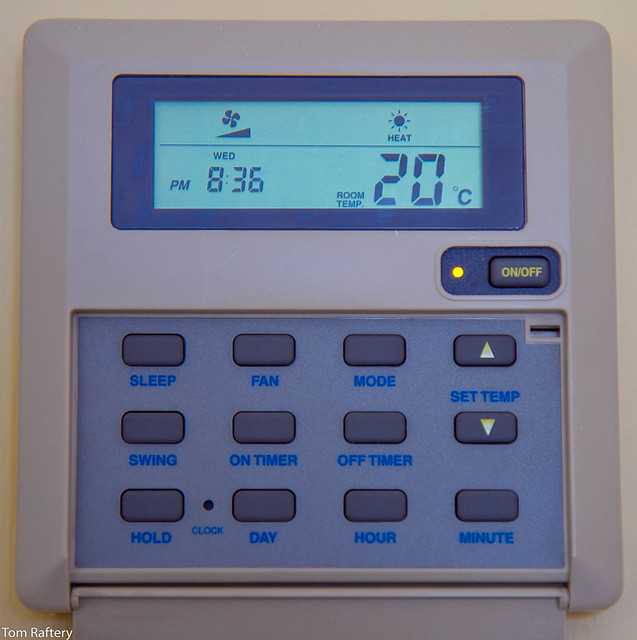Is energy too cheap to motivate consumers to change their habits and use less?
In the Smart Grid Technology conference I attended in London last week a number of discussion points came up over and over again. I wrote already about how utility companies are wondering how to engage their customers around smart grid projects. Another topic which raised its head frequently was the question of how to motivate customers to change when energy is so cheap!
The obvious answer is to raise the price of energy, and this will happen over time, but it is the wrong answer – in the short-term at any rate.
The issue is not that energy is too cheap, rather it is that people have lots of demands on their attention. To make it worth people’s time to become involved in energy saving activities, if the return is not very high (because energy is cheap) then the process of reducing energy consumption needs to be made simple!
Look at the thermostat above. This is the thermostat to control the central heating/air conditioning in my home. I like to think I am reasonably technical. I have been a Windows sysadmin for a multi-national company, managing Windows, Exchange, Active Directory, ISA and SQL Servers. I edit php files regularly, I remotely manage my own CentOS server via SSH and I’ve even done quite a bit of regex scripting of .htaccess files!
But this thermostat is beyond me!
I know it has a timer, so it should be possible to set it to come on and off at pre-arranged times. Should. Getting it to do so seems to require a Stephen Hawking-like intellect. And, even if I did manage to figure it out, it is so unintuitive that the next time the clock goes forward (or back), I’d have forgotten again and would need to start over! Which begs the question, if my phone knows when to change its clock forward or back, why doesn’t the thermostat – but I digress!
This is far too much hassle entirely. So I don’t use the timer in my thermostat. Or any of its functionality (apart from on/off). And I’m far from being alone in this.
Home energy management systems have, to-date, suffered from having appalling user interfaces. Consequently, no-one uses them. Why would they? They are hard to use and energy is cheap. The room is too hot? Rather than trying to figure out how to turn it down, just open the window!
However, if energy management were made simple and no effort were required to make changes, then it wouldn’t matter nearly as much that the savings were not substantial.
Making energy device interfaces easier to use is no silver bullet mind. This kind of approach needs to be combined with a culture of increased client communications, as I outlined in my earlier post. However, combining these two strategies would go a long way towards making people energy responsive.

